Where are they now? What happened to these airlines? Julia Prior looks at some of the most famous airlines of the past who have gone, but in some cases were resurrected briefly or in another form.
1. Ansett ANA

Already a major player in road transport, Reg Ansett decided to start an airline in 1935. Known as Ansett Airways, it was considered retaliation for the Victoria state government’s decision to force private road transport operators out of business thus preserving Victorian Railways’ monopoly. In 1957, Ansett-ANA was formed after the takeover of Australian National Airways. Renamed Ansett Airlines of Australia a year later. The government wanted a two-airline policy, smaller companies snapped up which would not be competitors of Ansett or Trans-Australian Airlines (TAA). The flying boat service from Sydney to Lord Howe Island operated until 1974. Expansion into New Zealand followed, with the company now jointly owned by TNT and News Corporation.
In 2002, Air New Zealand acquired full ownership of Ansett Australia, until they needed rescue by the New Zealand Government. In this deal, Ansett was set adrift and consequently placed into voluntary liquidation. The airline was to restart limited operations as “Ansett Mark II”. Creditors voted for this new plan, but ultimately the consortium involved decided not to proceed and the airline collapsed in 2001. At one time, it was intended to take over Virgin Blue, only to be turned down by one Richard Branson! The Ansett Transport Museum is housed in their first hangar at Hamilton Airport. At various times during its history the fleet consisted F-27, Convair 340, Bae146, A320, B727/737/747/767.
2. Pan Am
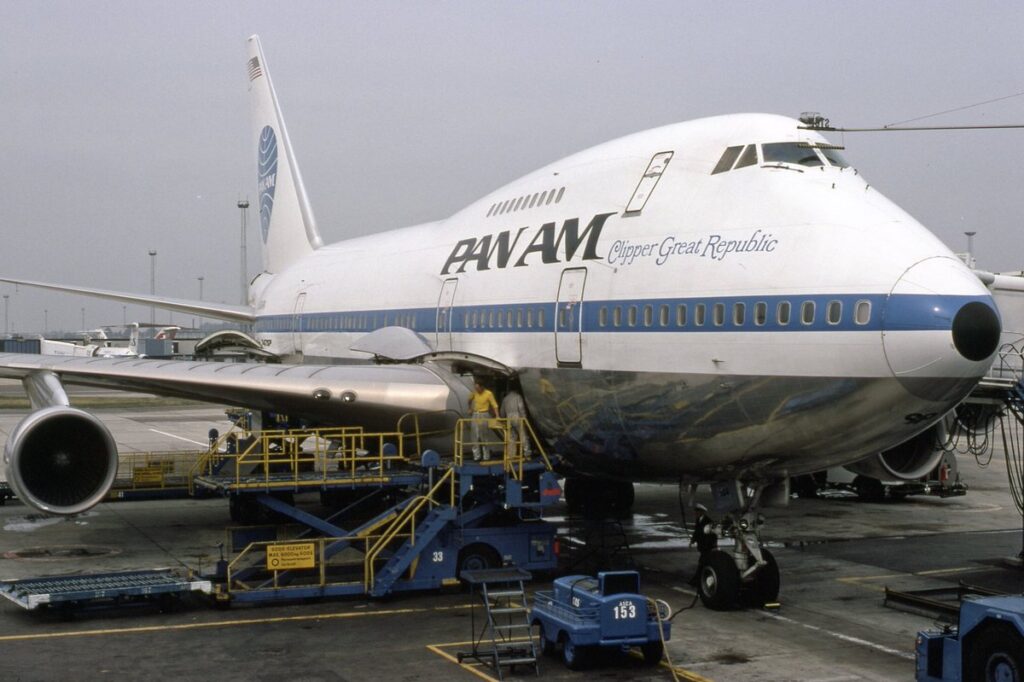
Founded in 1927 by three Air Corps Majors as Pan American Airways, the airline became the USA’s unofficial flag carrier. A founding member of IATA, it led the way in jet aircraft introduction, particularly with the Boein 747. Its logo and Clipper names were easily spotted at many international airports. The clipper names a nod to the 19th century sailing ships.
Perceived as the founding father, Juan Trippe became Pan Am’s first operational head. The US government, having granted mail contracts, made life easier by protecting the airline from competition. Charles Lindbergh accompanied Trippe on missions in South America, helping to secure landing rights. Crew training was regarded as the best in the world, and pilots often progressed from mechanic, gaining the relevant certificates along the way. Star Trek creator, Gene Roddenberry was a Clipper pilot.
In 1946, regular transatlantic flights began from La Guardia to Bournemouth and Lisbon. As the jet era began, Pan Am flirted with buying the Comet but ultimately chose Boeing 707. As 747 launch customer, ex-President Nixon’s wife christened the first one “Clipper Young America”. The company slogan “World’s Most Experienced Airline” was justified by operating profitable flights to every continent excluding Antarctica. The downturn began at the 1973 oil crisis, resulting in restructuring to avoid bankruptcy. One notable casualty was the airline’s round the world service.
The Lockerbie disaster and Gulf War hastened the company’s demise. A rescue package with TWA could not be agreed; Pan Am closed on 4 December 1991. In the subsequent fallout, some Pan Am employees blamed Delta, but a judge ruled in the latter’s favour. The only surviving division is Pan Am International Flight Academy in Miami, now owned by the parent company of Japan’s All Nippon Airways. In 1998, Guilford Transportation Industries purchased the rights to the name and intellectual property, then renamed the company Pan Am Railways.
3. Sabena

The national airline of Belgium was formed in 1923, the acronym stands for Societé Anonyme Belge d’Exploitation de la Navigation Aérienne. Its first commercial flight was Brussels-London via Ostend. The airline was partly funded by Belgians residing in Belgian Congo, who had lost their air service in 1922. The first long-haul flight operated in 1935, taking five days from Brussels to Belgian Congo. Sabena had a long history of serving African destinations, their only profitable routes.
After WWII, the DC-3 became the mainstay of the fleet. Transatlantic flights began in 1946, with an upgraded fleet of DC-4 and DC-6 aircraft. The DC-7 only operated for three years, before the jet age arrived. Super Constellations were also leased to serve transatlantic routes for the 1958 world exposition in Brussels.
1960 saw the introduction of the Boeing 707 on the Brussels-New York route, becoming Europe’s first airline to operate jets on this route. The Caravelle then served mid-haul European destinations. Early 1960s saw increased unrest in Congo, with the Belgian Government ultimately commandeering Sabena’s entire long-haul fleet to repatriate Belgians. The airline also held 30% of shares in the newly formed Air Congo.
More jets were introduced, such as the 727 and Douglas DC-10, whilst Fokker F27 could regularly been seen at Heathrow and UK regional airports. Only two 747s joined the fleet. Sabena also operated Airbus A310, A330 and A340 aircraft.
After liberalisation of European air services in the 1990s, the Belgian Government realised that Sabena could not survive, as EU rules meant government aid was illegal. In 1995, Swissair was finally allowed to purchase a 49% stake and took over management. Airbus A320, A321 and A319 were introduced for short-haul services. After the September 11 attacks, the pledged investment from Swissair failed to materialise. A group of investors managed to take over the Sabena subsidiary, Delta Air Transport in November 2001, transforming it into SN Brussels Airlines. After merger with Virgin Express in 2006, Brussels Airlines was formed. There are many reasons cited for Sabena’s bankruptcy. The deal with Swissair that could not be fulfilled due to that airline’s precarious financial state and the involvement of various Belgian politicians in poor business practices.
4. Northwest Airlines
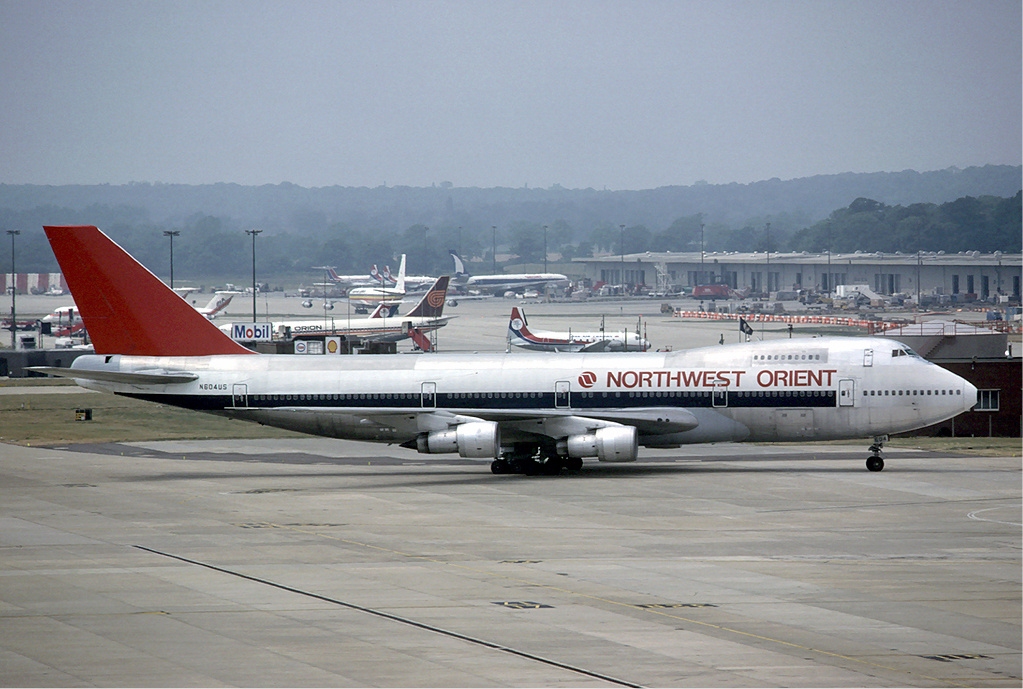
Founded in 1926, its first passenger service operated in 1934 from Eagan Minnesota, close to Minneapolis-St Paul. In 1931, the airline had sponsored the Lindberghs on a pioneering test flight to Japan via Alaska. Northwest discovered 2000 miles on New York-Tokyo flights could be saved by using the Great Circle route. During WWII, the airline flew troops and supplies to Alaska. The aircraft tails painted bright red to make them easily distinguishable in the harsh weather conditions. After WWII, Northwest became a dominant carrier for trans-Pacific routes, opening a hub at Tokyo Haneda.
It became the first airline to operate direct services between USA and Japan using the Douglas DC-4, before adding Tokyo-Seoul and Tokyo-Manila via Okinawa. Taipei was added in 1949 due to unrest in the Republic of China. Now rebranded as Northwest Orient, it upgraded to Boeing 377 Stratocruisers before the DC-6 was introduced, followed six years later by DC-8.
In 1951, Northwest became involved in formation of Japan Air Lines by leasing crew and aircraft out. In 1957, the airline’s meteorologists pioneered the first clear-air turbulence forecasting system, based on experience of flying over northern mountainous regions. Lockheed Electra and Boeing 727 aircraft were introduced during transatlantic and domestic expansion in the late 1950s, and non-stop transpacific flights now operated by Boeing 707, 720 and the first 747 in 1970.
When United acquired Pan Am’s pacific routes, Northwest bought Republic Airlines and established hubs at Detroit Metropolitan, Minneapolis-St Paul and Memphis International. It was a necessary domestic network to feed the long-haul routes. Orient was then dropped from its name.
In 1989, became launch customer for B747-400. A subsequent buy-out involving KLM led to drastic pay and fleet cuts over three years. Northwest became profitable again after many years of poor industrial relations. Its services to China were greatly affected by the SARS outbreak in 1996. The subsequent emergence of low-cost carriers such as Southwest, forced Northwest into drastic cost cutting and hastened retirement of older aircraft. After filing for Chapter 11 bankruptcy protection in 2005, the airline merged with Delta in 2008. Two years later, the name disappeared.
5. Continental Airlines

Founded in 1934 as Varney Speed Lines based in El Paso. Commenced flights in 1937 as Continental Airlines. Its founder Walter T. Varney also set up United. Began as a mail carrier before starting passenger services. Its HQ relocated to Denver (Stapleton) in 1937. During WWII, the airline’s maintenance base converted B-17, B-29 and P-51 for the US Air Force. The profits enabled Continental to contemplate fleet expansion and acquisition, resulting in the addition of Douglas DC-3, Convair 240 and 340 aircraft.
Early routes across Kansas, Oklahoma, New Mexico and Texas included stops at 22 smaller cities. In the early 1950s, many interchange routes were operated with American, Braniff and United. Merger with Pioneer Air Lines in 1956 brought access to more destinations across Texas and New Mexico. Discussions were also underway with Boeing, to become one of the first operators for the new 707.
During the Vietnam War, Continental provided cargo and troop transportation to Asian and Pacific bases. It was the most common non-military carrier seen transiting Saigon Tan Son Nhat Airport. In 1963, Continental denied employment to African-American pilot and Air Force veteran Marlon D. Green. Subsequently winning his case, Green flew with Continental from 1965-1978.
As one of three launch airlines for the Boeing 747, Continental also placed a large DC-10 order. In the 1970s, Denver became its main hub. The Polynesian Pub on the Jumbos was also introduced on the DC-10. However, the need to generate revenue after the 1973 oil crisis saw these removed and seats installed.
Whilst deregulation allowed route expansion, Continental’s profits suffered as passengers selected cheaper alternatives. After three years in Chapter 11 protection, emerged in a better financial position, although the acquisition of smaller regional airlines threatened its market position. In 1998, Continental embarked on a transatlantic expansion programme. The arrival of its first 777 heralded the launch of non-stop services Newark-Tel Aviv and Houston-Tokyo. In 2010, United announced it would pursue a merger with Continental instead of US Airways.
6. Dan-Air London
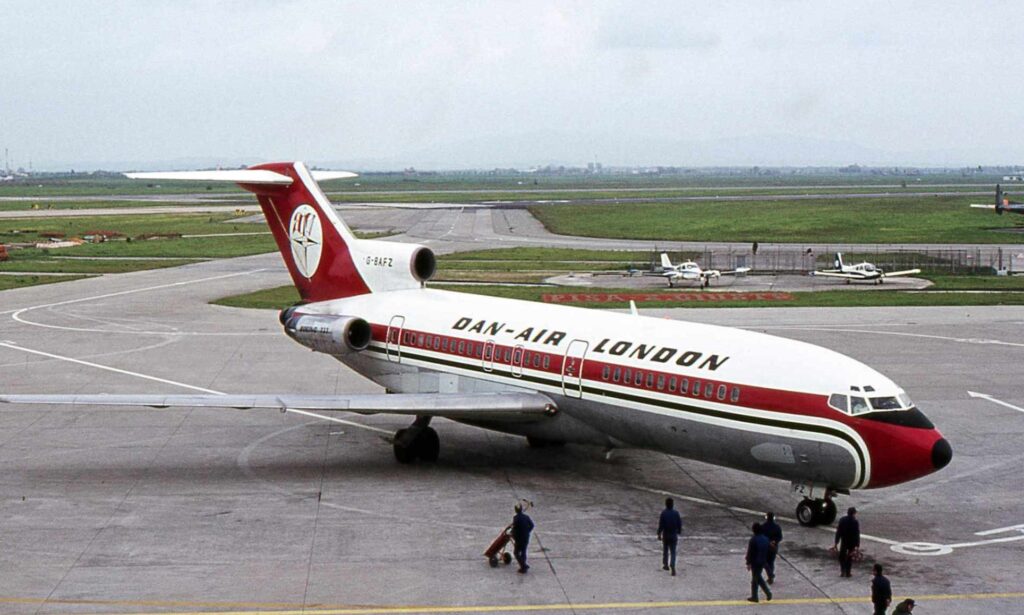
Founded in 1953 by the London based shipping brokerage Davies & Newman (hence ‘Dan’). Used a DC-3 acquired from Meredith Air Transport as a debt settlement. Initially operated cargo and passenger flights from Southend and Blackbushe, before moving to London Gatwick in 1960. Sustained growth into seasonal charter work and scheduled services followed.
London was added to the airline name to avoid confusion with Danish Air Lines. Introduction of the Comet 4 in 1966 saw Dan-Air become the second British independent after British United to operate sustained jet services. The 49-strong fleet included many used for spares only.
Dan-Air won a contract with German tour operators, to ensure its fleet was adequately utilised. Its BAC-1-11 fleet was often seen on the apron at Berlin Tegel. The early 1970s saw the introduction of Boeing 707 and 727. The first 727s were modified by the installation of a rear door due to increased seating, and stick shaker on the flightdeck, both to satisfy CAA requirements. Also became the operator of the UK’s largest charter fleet.
Dan-Air engaged Britain and Europe’s first female jet captain. By the 1980s, it also operated oil rig support flights, with a fleet of 13 HS.748s between Scottish mainland bases and the Shetland Isles. The Skyways 748 fleet was utilised on Link City routes such as Bournemouth-Birmingham-Manchester-Newcastle. Also continued the London-Paris coach-air service between Ashford (Lympne) and Beauvais.
Dan-Air became the first UK airline to use the BAe 146 on many short-haul services. Many unprofitable routes were taken over from British Airways. The introduction of an Airbus A300B4 in the late 80s signified major expansion and launched two-class services on some routes. Plans to expand during a recession, lack of integration with a UK tour operator, coupled with an ageing fleet of 727 and BAC 1-11 aircraft made the company uncompetitive. With no obvious strategy and failure to merge with another carrier, it resulted in British Airways acquiring Dan-Air in 1992 for the nominal sum of £1.
7. Air Afrique

Formed in 1961, Air Afrique was a Pan-African airline owned by many countries that did not have the capability to create and maintain a national airline. Operating in West and Central Africa; its HQ located in Abidjan, Ivory Coast. Gambia, Ghana and Mali did not participate as they wanted to form their own airline with help from Russia. The Treaty of Yaoundé signed in March 1961 formed Air Afrique as a joint venture with Air France and UAT holding 17% each. Benin, Burkina Faso, Cameroon, Central African Republic, Chad, Cote d’Ivoire, Gabon, Mauritania, Niger, Republic of Congo and Senegal contributed the remaining 66% of capital.
Léopoldine Doualla-Bell Smith, the world’s first black flight attendant, was invited to move to Air Afrique; she was then the only qualified African person in French aviation and first employee hired by Air Afrique. After starting internal routes with DC-4, a Constellation acquired for long-haul operations to Paris. Leased DC-6 were also used. In 1962, the airline added Boeing 707 to its fleet, then the Douglas DC-8. Also became a member of IATA.
In 1963, UTA was formed and Air Afrique was reorganised. DC-8 flights started to Marseille, followed by Hajj services to Mecca using a Starliner. In 1965, Air Afrique passengers could fly to New York on Pan Am, from Paris. Togo joined the consortium and the airline started to undertake its own maintenance, also for neighbouring air forces. Major works were carried out at Le Bourget by UTA.
The mixed cargo-passenger Caravelle arrived in 1967 and was deployed on African routes. With the arrival of another DC-8 in 1968, the airline operated to 22 African countries in addition to Paris, Bordeaux, Lyon, Marseille, Nice and Geneva in Europe.
With introduction of the DC-10 in the 1970s came unrest amongst the member countries. Cameroon broke away to form Air Cameroon. Gabon also left; Sierra Leone joined in 1978. Airbus A300 and Boeing 747 freighters were ordered that year. Rome and Zurich were added to the network.
Problems began in the 1980s when Africans held all the top management jobs. Help was sought from the French Government and its first non-African Chairman and CEO was appointed. The company continued to lose money in the 1990s, due, it’s claimed, to constant interference by the members. After a final attempt to restructure the company in 2001, it was declared bankrupt in February 2002, with Air France taking over the majority of its African routes.
8. Air UK
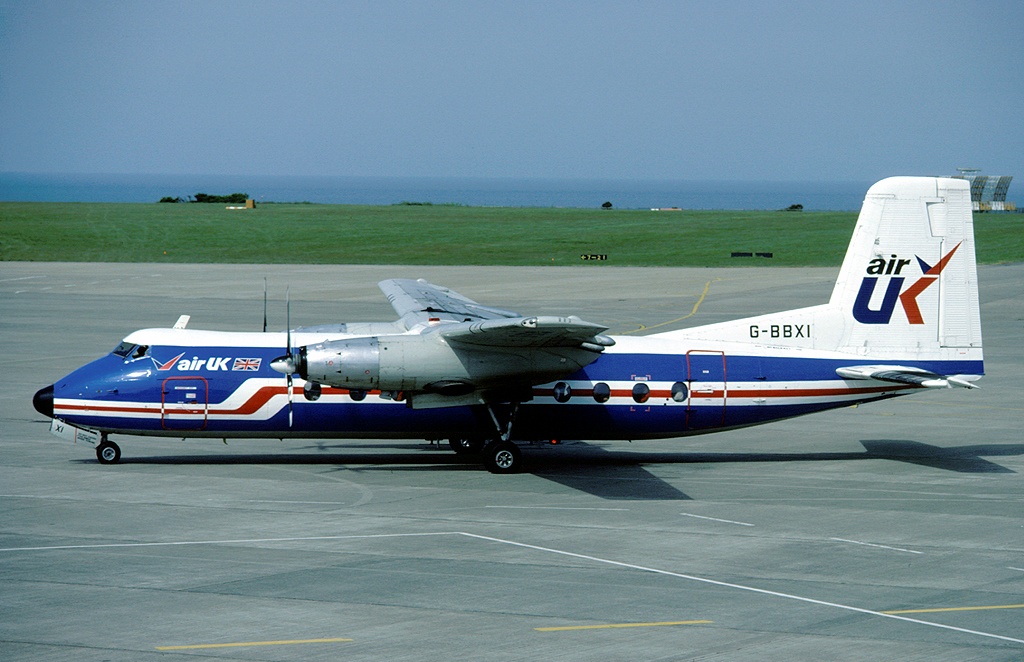
Formed in 1980 as totally privately owned, independent airline resulting from the merger of four rival UK based carriers – the dominant ones being British Island Airways and Air Anglia. Its offices were originally in Redhill, Surrey before moving to Crawley, West Sussex. In 1988, it moved to London Stansted, the year after Air UK Leisure was formed.
During its 19-year existence, the fleet consisted of mainly Fokker aircraft, includin the F27, F50, F28 and F100, working alongside BAe 146 and BAC 1-11. A prop fleet included Shorts 330/360, Embraer Bandeirante and Handley Page Dart Herald. Changing to an all blue livery drew disapproval from the CAA, since the aircraft would be difficult to see against a blue sky.
The scheduled route network served almost all UK airports plus Brussels, Dusseldorf, Amsterdam, Rotterdam, Ostend, Paris and Stavanger. In 1980, when British Airways decided to withdraw its Vickers Viscount fleet and loss-making routes, Air UK took over many including Heathrow-Guernsey year-round. The early 1980s recession resulted in major cutbacks of routes, staff and bases. A management buy-out in 1982 saw the break-away of the charter business.
KLM was a longstanding business partner of both BIA and Air Anglia, and acquired a 14.9% stake in the holding company, subsequently increasing to 45% before becoming the sole shareholder and renaming the company KLM uk.
9. Varig

The first airline founded in Brazil, in 1927. The acronym stands for Viação Aérea RIo-Grandense, or Rio Grandien Airways. Started by a WW1-decorated German aviator who had emigrated to Brazil in 1921. It was an offshoot of Condor Syndikat. The first aircraft was a Dornier Do J Wal flying boat given the registration P-BAAA. Despite difficulties, domestic routes and aircraft were added.
In 1942, the first international service operated Rio Grande-Montevideo using a Dragon Rapide. A Brazilian appointed Manager-Director considered necessary to ease the supply of parts and fuel during WWII. After the war, 50% of the company’s shares was transferred to a not-for-profit foundation belonging to the employees. Its aim was to provide health, financial, social and recreational benefits.
In 1949, Varig was granted concession to fly to USA, and the inaugural flight Rio de Janeiro-New York JFK took place in August 1955 using a Lockheed Super Constellation. Curtiss C-46 and Convair 240 aircraft were also added to the fleet.
In 1959 Varig, Cruzeiro do Sul and and VASP co-ordinated their schedules and operations, also sharing revenue in response to competition from Real Transportes Aereos. The first jets arrived in the form of Caravelles and Boeing 707s, and by 1961 Varig was the largest airline in South America. After ten years of lobbying, European services began in February 1965.
As a result of the 1973 oil crisis, Varig decided to update its fleet. The DC-10 was chosen for long-haul and the Boeing 737 became the work horse for domestic routes. In 1990, gradual deregulation eroded Varig’s monopoly. World recession and administrative problems prompted a move to the newly opened Sao Paulo airport. After unsuccessful merger talks with TAM in 1994, Varig successfully applied to the bankruptcy court for an order to begin reorganisation. With scheduled passenger services now fully integrated into GOL, which was formed in 2001, the new corporate image was unveiled in 2007. All flights now carry GOL flight numbers.
10. Cyprus Airways

Formed in 1947 as a joint venture between the British Colonial Government of Cyprus, British European Airways (BEA) and other private investors. Flights started in 1948 using a DC-3. Destinations from Nicosia included Rome, London (via Athens), Beirut, Cairo, Istanbul and Haifa. BEA was now able to serve the Middle East using Cyprus Airways. In 1952, London-Nicosia became the world’s first regular turboprop service, utilising Airspeed Ambassador and Viscount aircraft.
As a result of the deteriorating political situation, BEA took over all Cyprus Airways routes in 1958. The newly formed independent Cyprus Government took a majority shareholding in 1960. Cypriot nationals were now hired and trained as crew by BEA staff, operating BEA aircraft. Cyprus Airways became the first Middle East airline to operate jets, with the introduction of the Comet 4B, then Trident and BAC 1-11.
Much of the fleet was destroyed in 1974 during the Turkish invasion, although some aircraft were repaired and flown out. With the closure of Nicosia Airport, a smaller facility was built at Larnaca. Limited operations restarted in 1975 with leased Viscount and DC-9 aircraft. With the addition of a DC-8, flights were introduced to Saudi Arabia. By 1981, the fleet included Boeing 707s and more BAC 1-11s.
Transition to Airbus in 1980s saw the arrival of A310s, then the A320. Expansion into many UK regional airports added to the healthy profits already experienced. Birmingham-Larnaca operated for over 30 years. The addition of Paphos Airport meant Cyprus Airways could offer two destinations and relieve capacity pressure at Larnaca.
British Airways sold the last of its shares in 1991. Cyprus Airways decided to enter the dedicated charter market in 1992 with the formation of Eurocypria and taking over duty-free operations at both airports. The A330 replaced A310, and the smaller A319 was introduced on shorter routes. All aircraft bore the names of Cypriot landmarks and cities.
Facing financial difficulties because of poor management, the government bought Eurocypria in 2006. After EU membership, the Cypriot Government was investigated after pumping cash into the failing airline. The state aid had to be returned and the company was effectively bankrupt in 2015.
Resurrected by Charlie Airlines of Russia in 2016, the route network now severely curtailed to serving UK, Greece and Russia. Brussels remained, for the Cypriot politicians with EU responsibilities.
11. Aloha Airlines

Operations began in 1946 from Honolulu International in Hawaii. First services were to Maui and Hilo using the DC-3. The original name, Trans-Pacific Airlines, reflected the founder’s wish to serve Hawaii, California and China. After becoming profitable and with increasing passenger numbers, the name was changed to TPA-The Aloha Airline.
Fairchild F-27 aircraft were introduced in 1959. The aircraft were unique, with a stronger keel beam and thicker belly skin fitted to satisfy the concerns around water ditching a high winged aircraft. Aloha subsequently introduced jets in the 1960s, with BAC 1-11 supplementing the Vickers Viscount and F-27. B737-200s were introduced in 1968 and immediately nicknamed “Funbirds”.
One Boeing 737 famously suffered explosive decompression in flight but managed to land safely in Maui. The major loss of integrity was unprecedented and remains unsurpassed. The cause metal fatigue.
This massive overcapacity damaged profits at both Aloha and Hawaiian, resulting in several unsuccessful merger attempts. In 1983, a DC-10 was leased to serve Honolulu, Guam and Taipei under the name Aloha Pacific. It was discontinued two years later, unable to compete with Continental Airlines. Quick-change 737s were then introduced, to operate passenger services during the day and cargo at night.
Later ETOPS certified 737-700s were operated which could serve Oakland. Regular services followed to Reno, Las Vegas, Orange County and Sacramento. The airline also operated Honolulu-Burbank-Glendale-Pasadena. The longest inter-island route was 216 miles, the shortest 62 miles.
Many factors caused Aloha to file for Chapter 11 protection in 2004. After a cash injection and new contracts issued, the airline again entered Chapter 11 in 2008. With the suspension of all passenger flights, the contract services division was sold to Pacific Air Cargo. The cargo division filed for Chapter 7 bankruptcy after many bidders withdrew. The name and intellectual property the subject of a court order stipulating the new owner did not sell to Mesa Air Group. Many thought Mesa responsible for Aloha’s failure.
Images courtesy of Flickr, JetPhotos, PanAm World, Alain Durrand, Eduard Marmet, Arpingstone, Pierguiliano Chesi, Wikimedia, Charles Osta, RuthAS, Richard Silagi
Information courtesy Wikipedia, Airline History, Airliner World

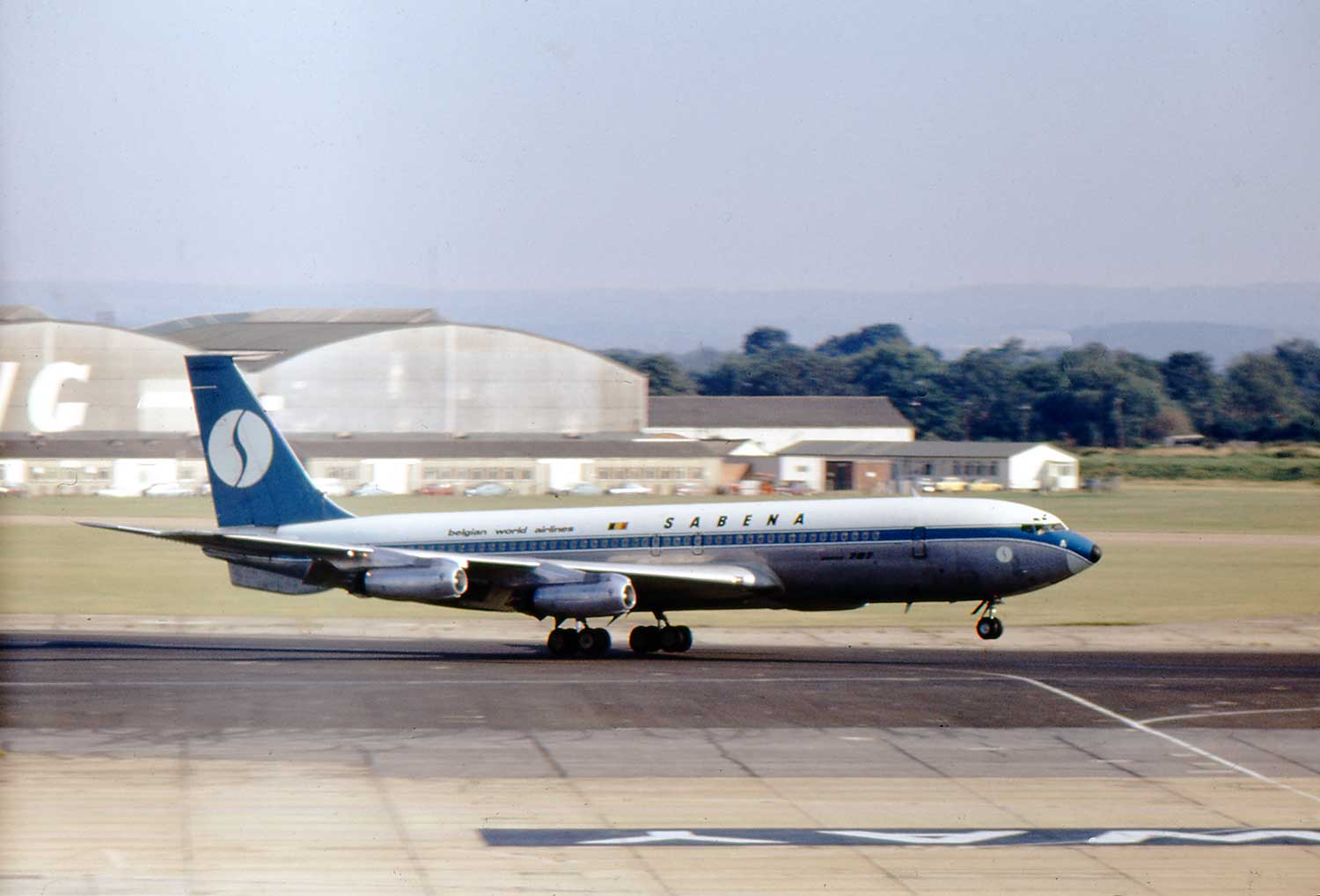



1 comment
I worked for ANSETT AUSTRALIA 1970-2001 in New Guinea, Melbourne and Perth, in the crewing, operations, flight planning and operations management and airport management fields. Great company to work for, they were good to their employees.
Also flown a lot on PANAM 707s and 747s, DANAIR Elizabethans and AIR UK Heralds, all sadly missed.